Explore the Kent country manor where wild deer roam free
Knole House and its medieval deer park are located in the heart of the Garden of England in the picturesque, lush Weald countryside in Kent. Just a stone’s throw from the historic town of Sevenoaks.
Referring to Knole as an English country house feels like a bit of an understatement, as its striking grandeur and grace deserve so much more.
We drove into Knole Park peacefully, weaving our way through the dappled woodland. As we passed over the brow of a hill, the elegant manor opened out before us. I was taken aback at how magnificent and stately it looked; it was a wow moment for me; I just wasn’t expecting it to be so imposing.
I couldn’t wait to cross the threshold and discover the 400 years of history within Knole House, and of course, Knole’s attractive 1,000-acre deer park.
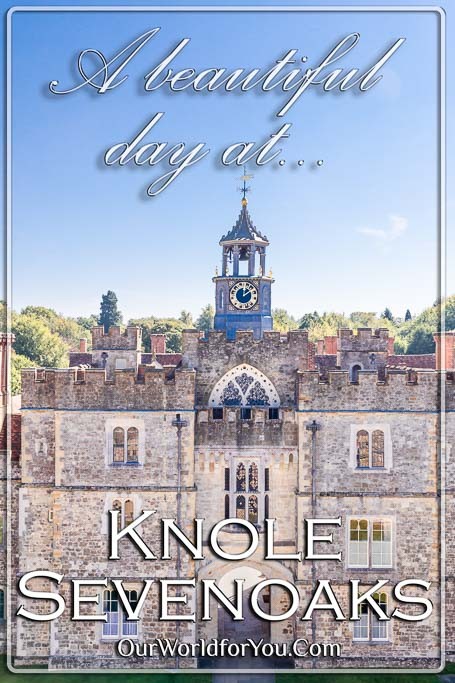
Where is Knole
How to get to Knole
- By Train
You can catch a direct train from London Bridge to Sevenoaks Station, which is 1.5 miles from Knole. The journey time is around 25 minutes, buses and taxis serve this station.
- By Car
Knole can be accessed from the A25 & A21. There’s a free car park for National Trust members, or parking charges apply to non-members visiting the house. Pre-book your visit.
A little history on Knole House and parkland
From Archbishops to RoyaltyKnole House is managed and cared for by the National Trust and in 1951 became a Grade I Listed Building. The house was principally built between 1455 and 1608.
The beautiful house dates back to the mid-15th century and, in 1456, was purchased by Thomas Bourchier, the Archbishop of Canterbury. Thomas Bourchier obviously wasn’t content with his existing substantial residence of Otford Palace just a few miles away.
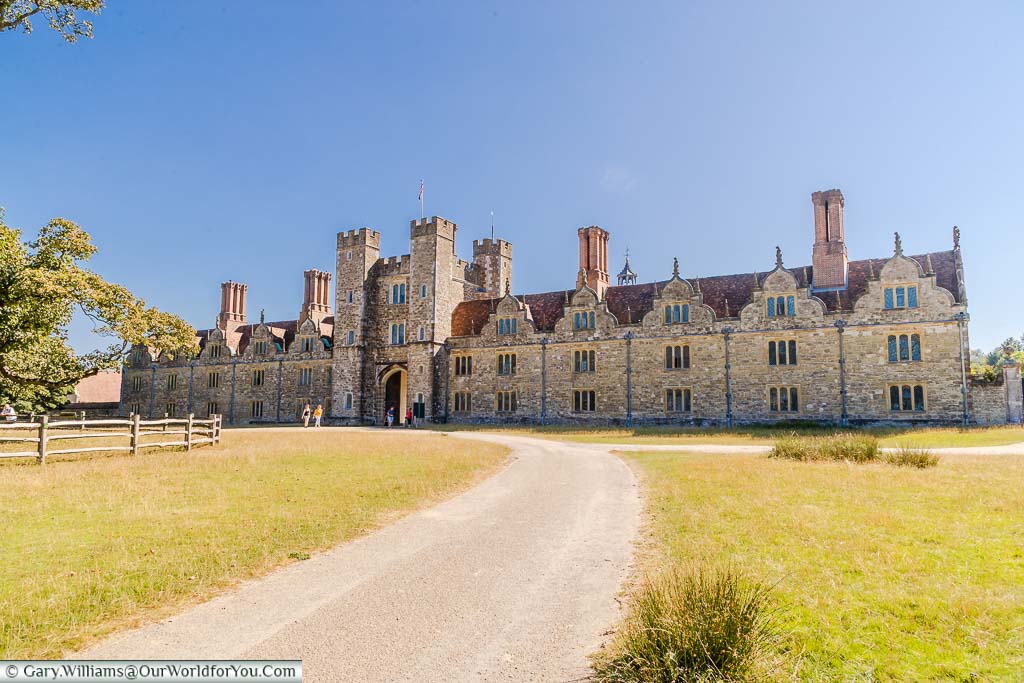
The archbishop instructed that Knole House be enlarged, adding charming courtyards and the lovely gatehouse tower. These continued improvements throughout the estate can still be enjoyed today. Knole House has a mixture of architectural styles, including Medieval, Tudor and Jacobean.
Knole House and its medieval deer park were occupied by four successive Archbishops prior to being passed through Royal hands. Including Henry VIII and Queen Elizabeth I.
In the early 1600s, Knole became the property of Thomas Sackville and has continued to be passed through the descendants of the Sackville family ever since. Knole House was donated to the National Trust in 1947 by Charles Sackville-West, and much of the house is still lived in by the Sackville-Wests.
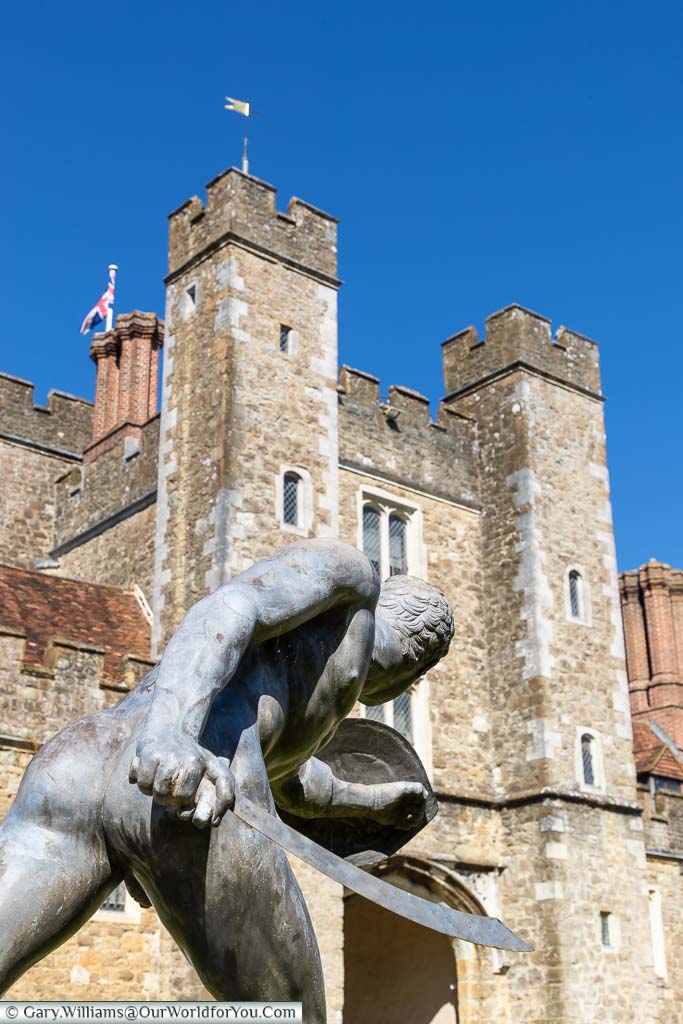
Exploring the Gatehouse Tower at Knole
Eddy Sackville-West’s home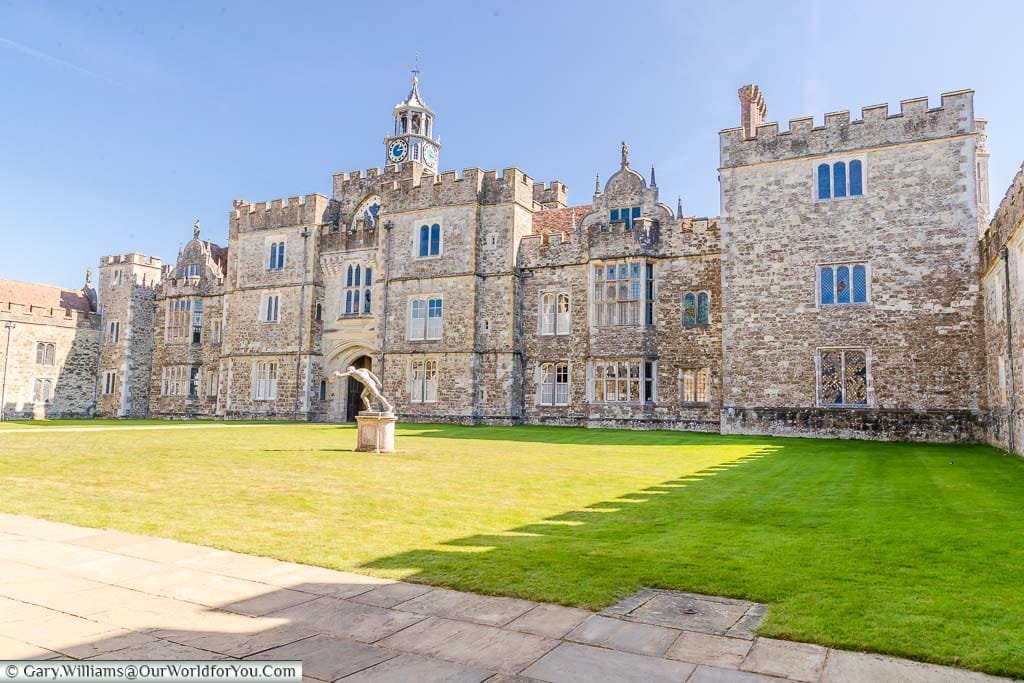
We head up the 77 steep spiralling stairs of the tower, which was home to Edward Sackville-West, 5th Baron Sackville, between 1926 and 1940. Known to his friends as Eddy, he was a novelist and music critic.
There are two main rooms that Eddy lived in during his time at Knole, a music room and his bedroom. The bedroom was reasonably simple with a single bed, fitted bookshelves full of fascinating novels and a lovely old bakelite radio.
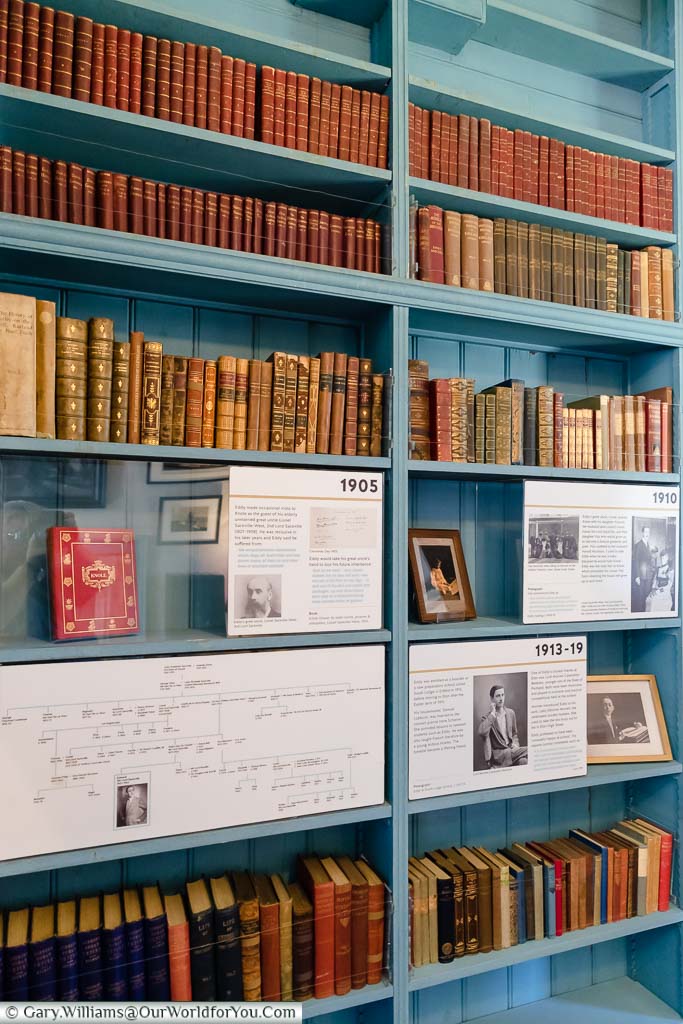
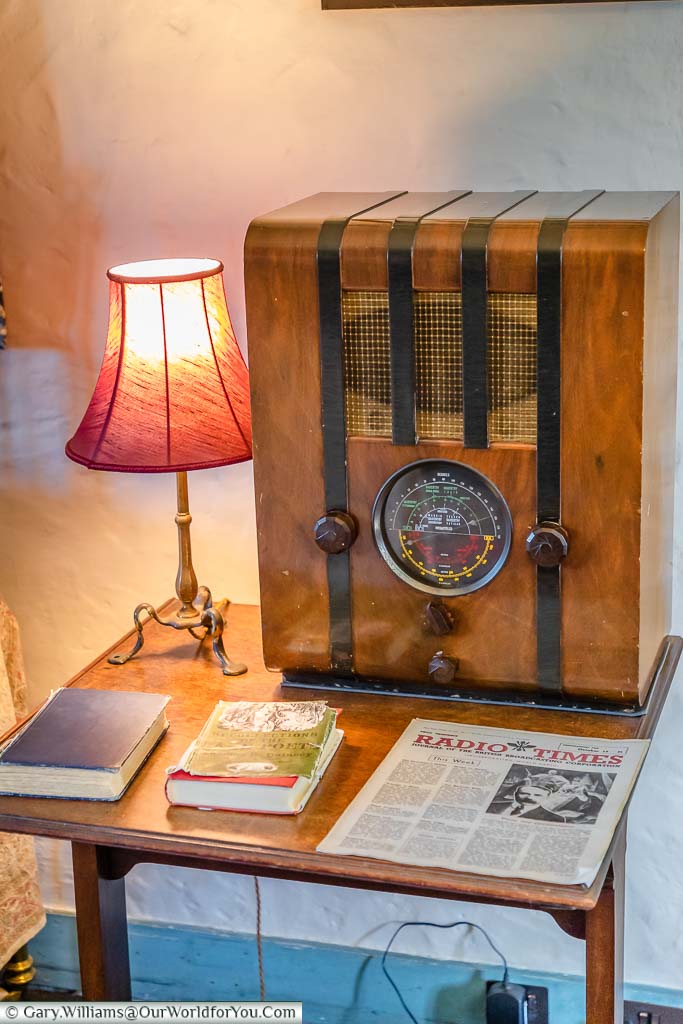
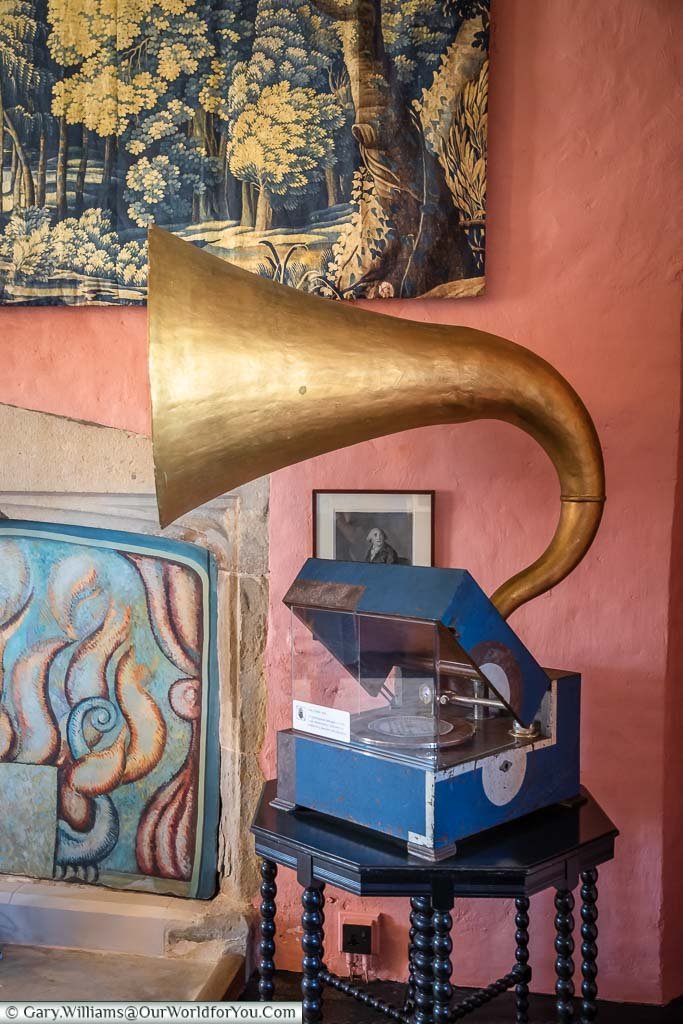
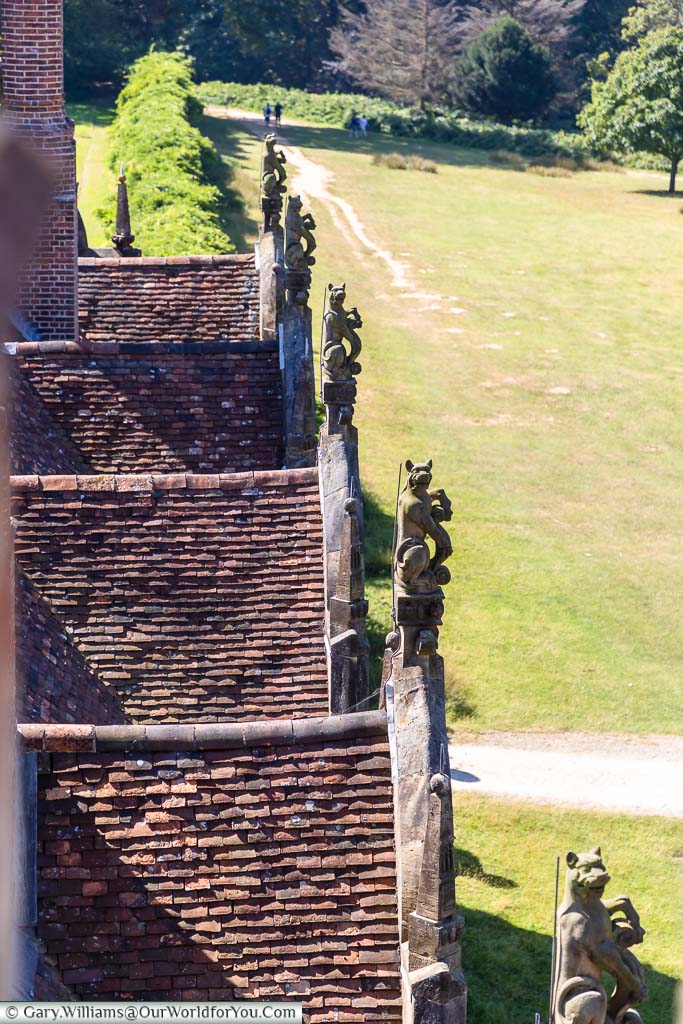
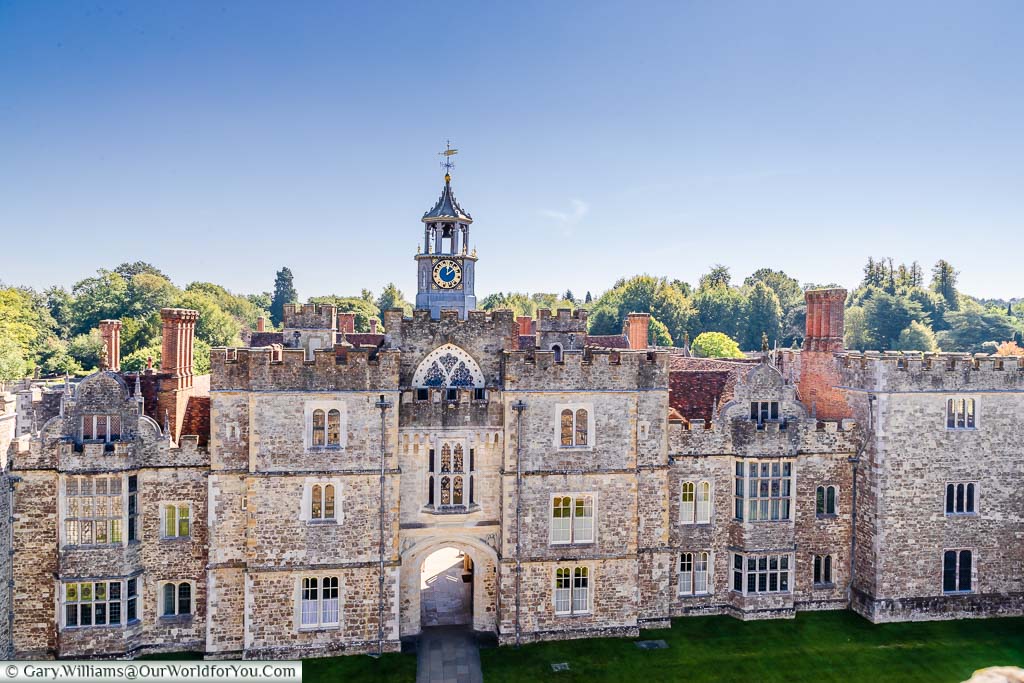
Just before we cross Green Court, we visit Knole’s Orangery, which was opened to the public in 2010. This delightful bright gallery with vast arched windows is so peaceful and created in the Gothic revival style.
Prior to the Orangery’s renovation, it was used for garden storage; however, now that partitions have been removed along with pre-existing floors, it creates a lovely open-plan gallery.
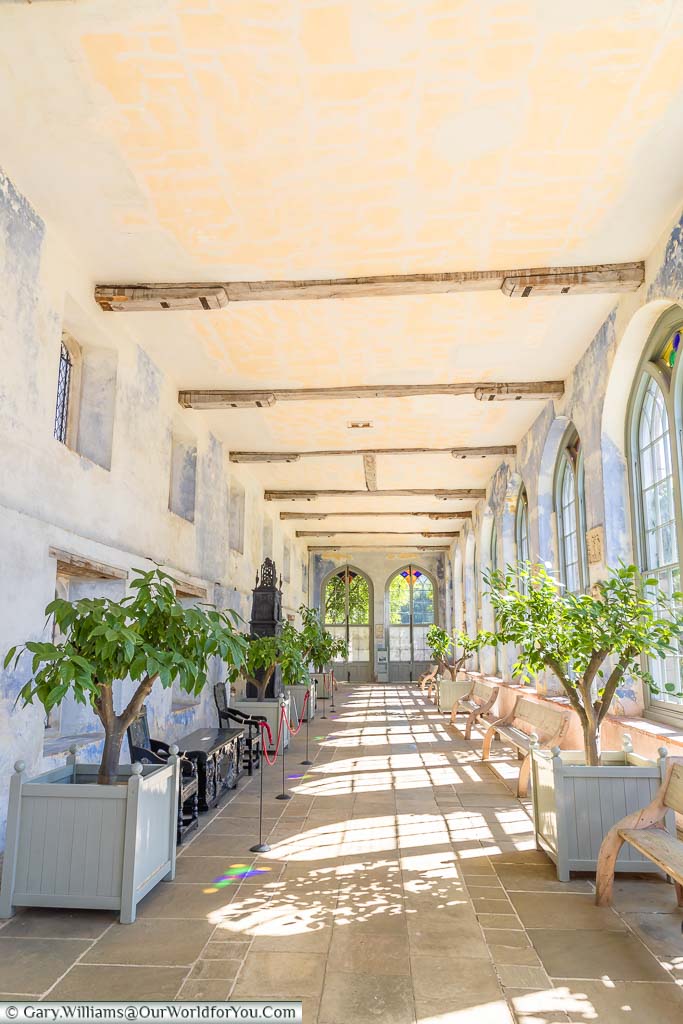
Where to stay in and around Sevenoaks
Visiting the showrooms at Knole
Strolling through grandeur and opulenceAcross the Green Court, you are automatically drawn to the enormous wooden doors that lead you beneath the second gatehouse into a collonaded courtyard of ‘Stone Court’.
It’s time to explore the interior of Knole House.
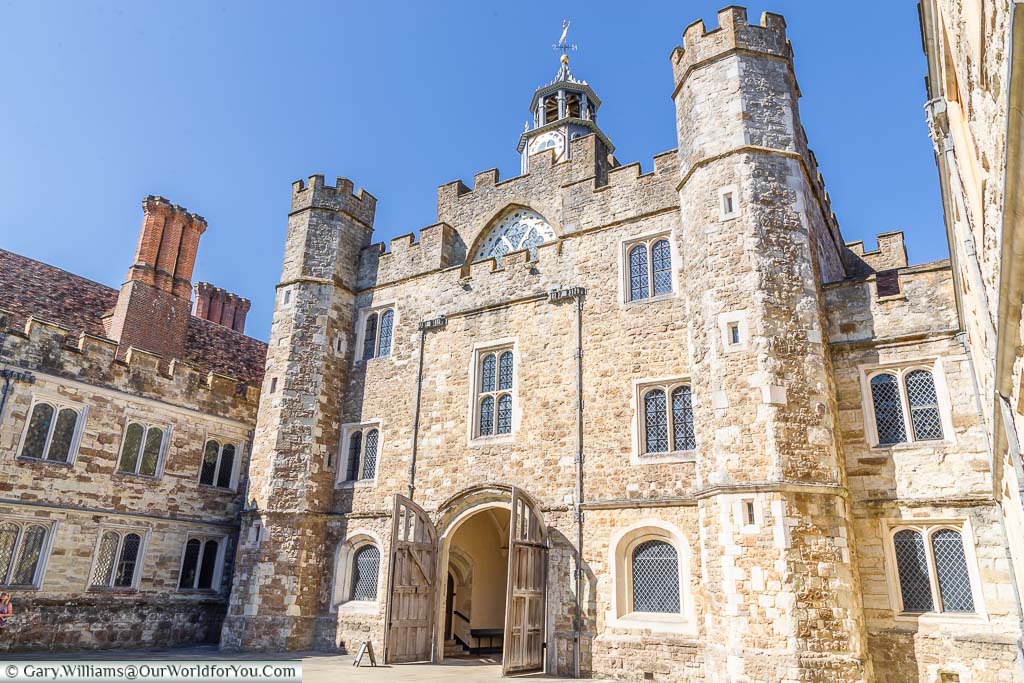
The first impressive room we discover is the majestic Great Hall re-modelled in 1605 by Thomas Sackville. The long wood-panelled hall with its ornate crests would have once held lavish banquets, entertaining the great and the wealthy.
All around the walls are large stately pieces of art depicting notable people, many of whom were Knole House owners and their relatives.

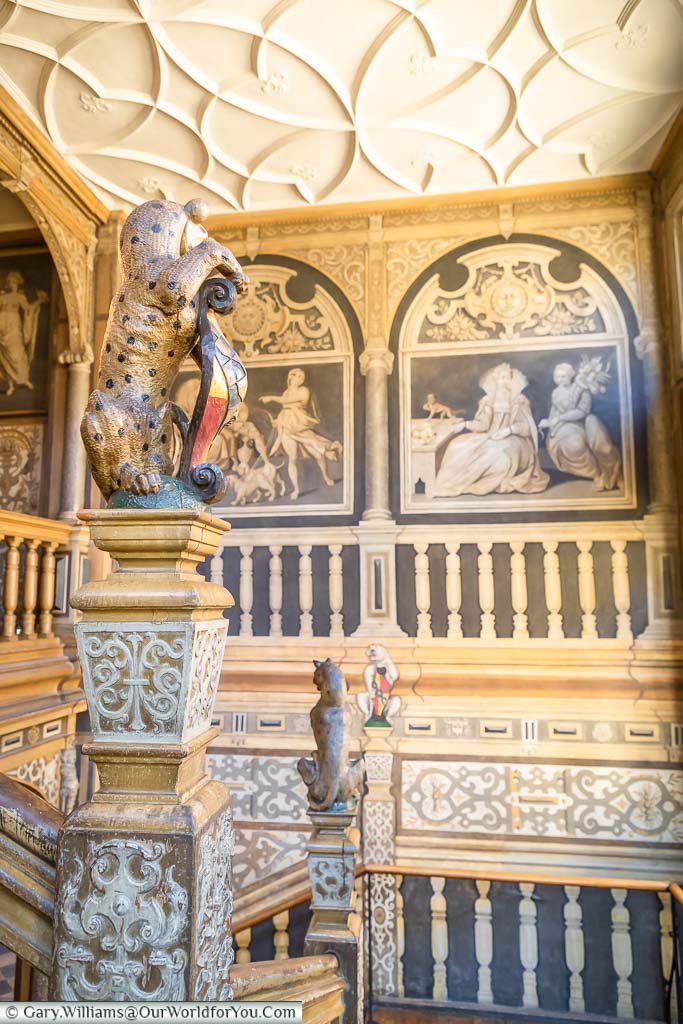
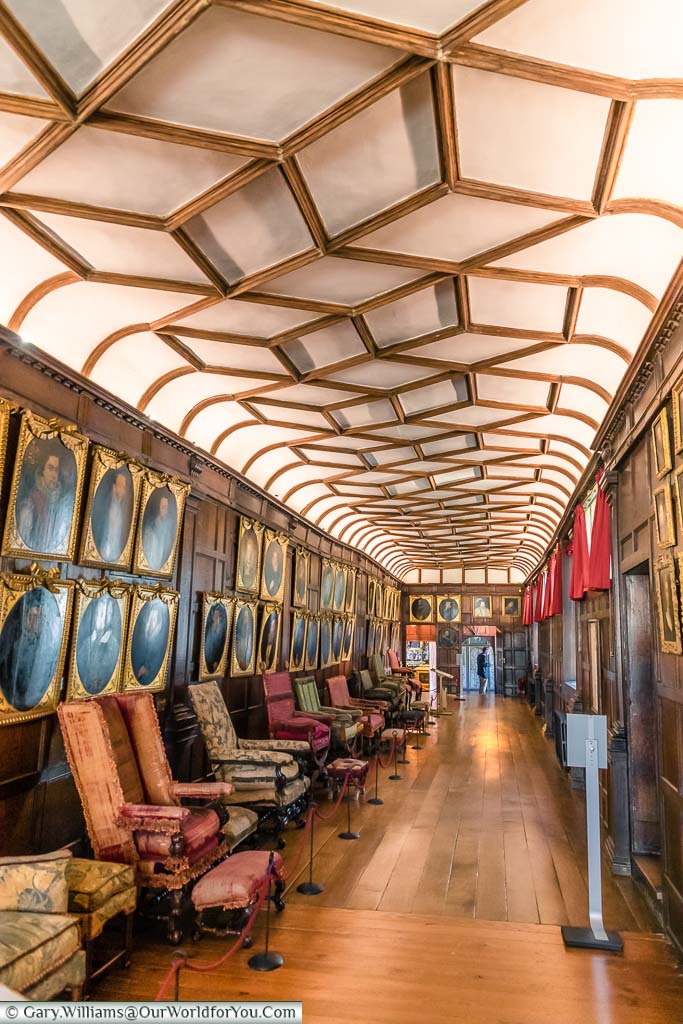
You effortlessly follow the guides that lead you into the Brown Gallery. The Brown Gallery is a long portrait gallery lined with an impressive collection of 16th and early 17th-century portraits.
The dark wood-panelled walls are awash with delicately detailed paintings of British royalty and elite and influential figures of society.
Ah, yes, what every country manor should house, a billiard room also adorned with splendid historical art.
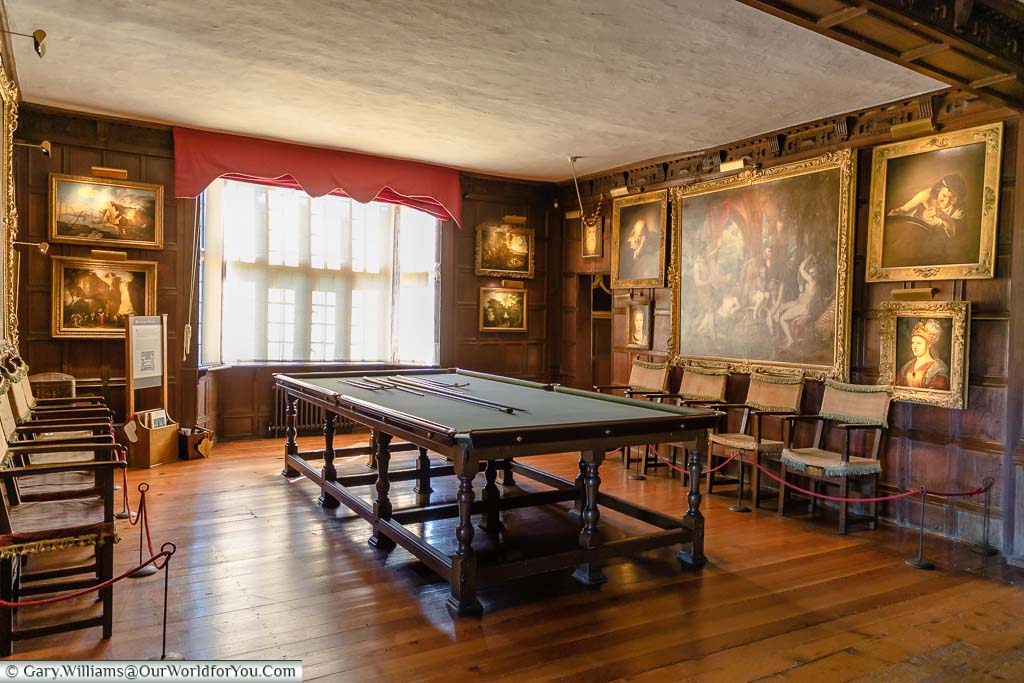
If you're intrigued by Kent's weird and wonderful history, or all unusual stories around the county, then take a peek at "Kent's Strangest Tales".
You won't be able to put it down, you can pick it up for your Kindle or in good old paperback.
The three state bedrooms in Knole
From the Spangle, the Venetian and to the King’sThe state bedrooms at Knole are extraordinary, and the beds are some of the oldest surviving Royal beds in the world.
The earliest bed within Knole is the Spangle Bed and was made in 1621 to impress James I. The beautiful, canopied bed is surrounded by silk hangings with delicate silver sequins or spangles stitched in. Hence the name of the bed.
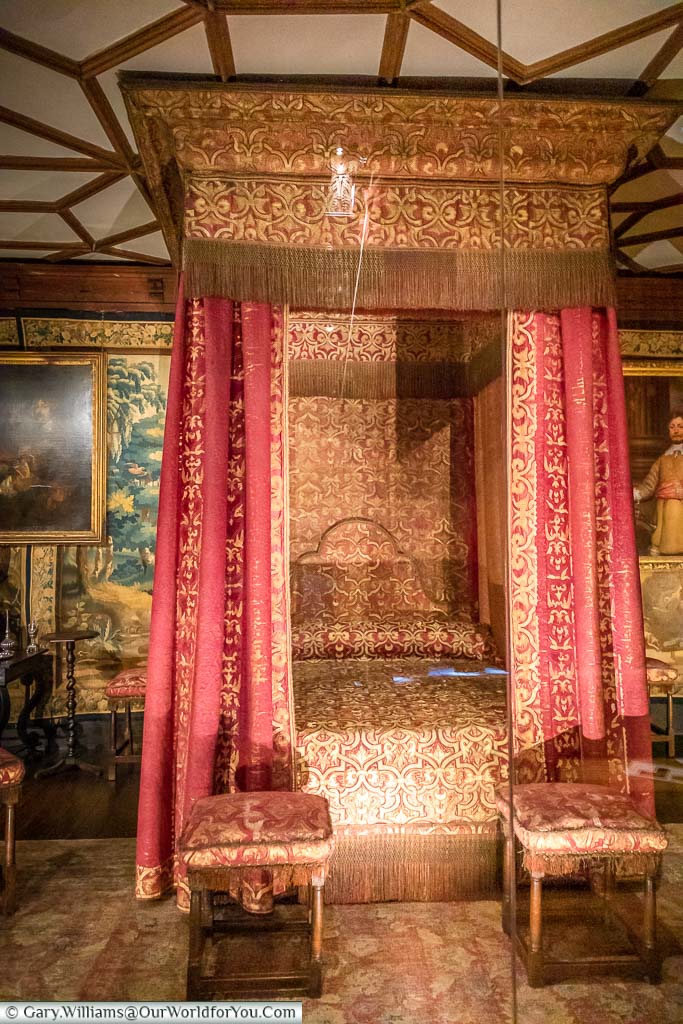
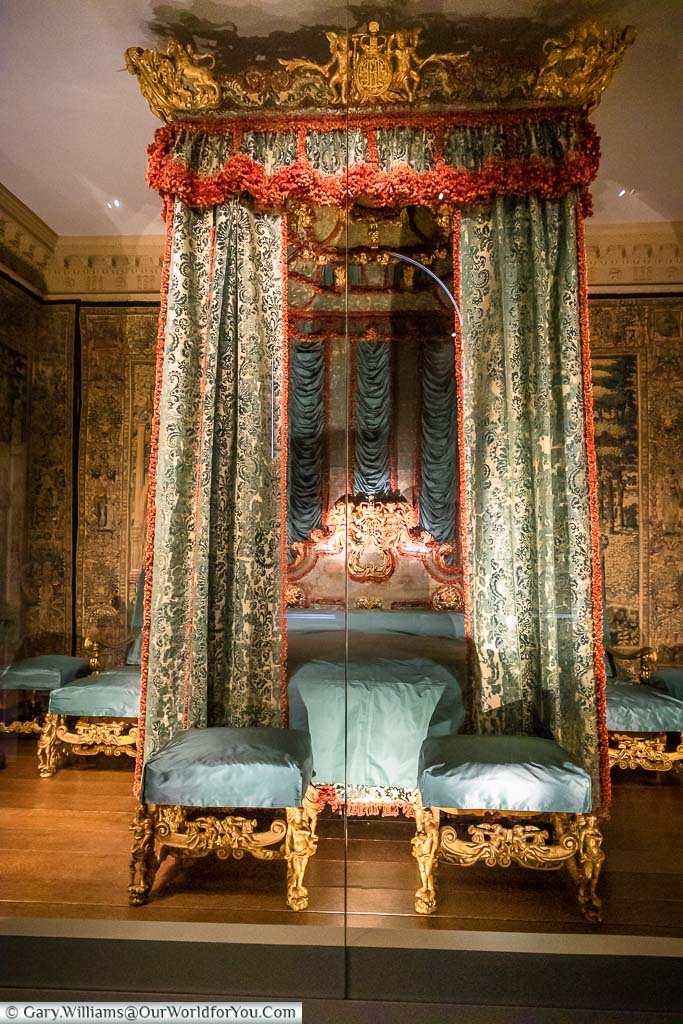
The second state bedroom is the Venetian Bedroom. The intricate and meticulous gilding on the Venetian bed was created in 1688 for James II.
The Venetian bedroom is stunning, and the painstaking conservation work that has been undertaken to bring it back to its former glory is splendid.
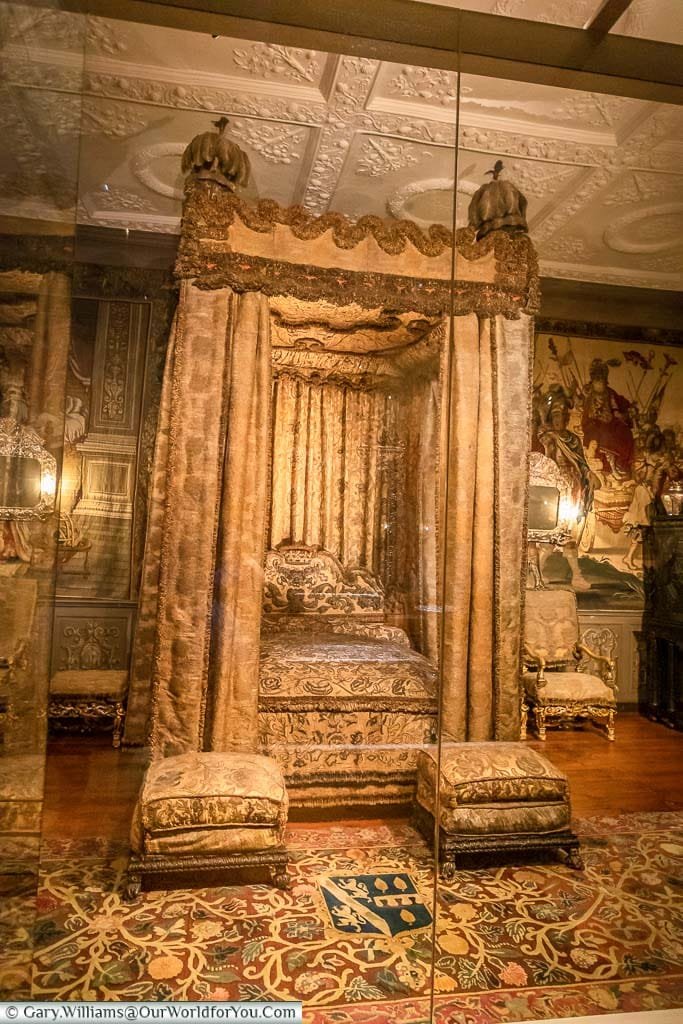
Knole’s centuries of love and care
Take a spin in the Ballroom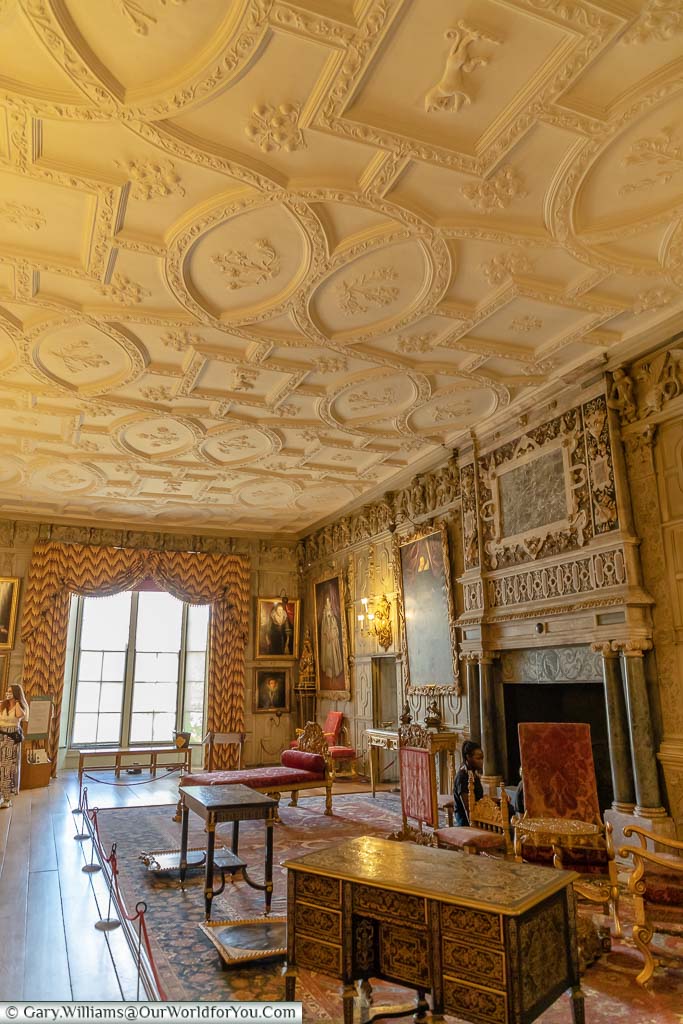
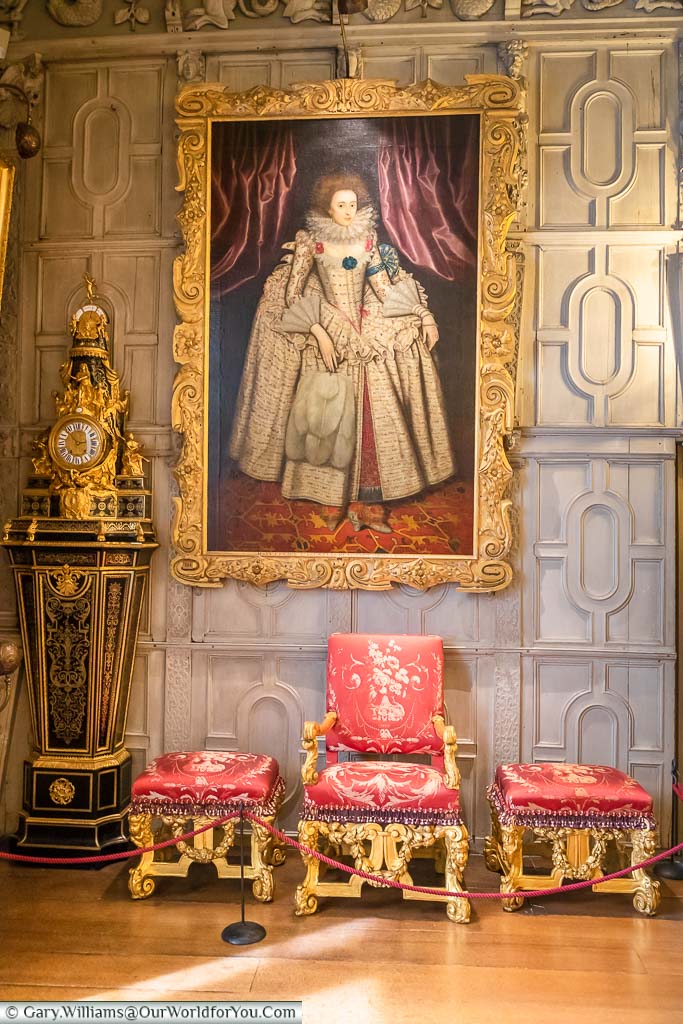
The Ballroom was one of my favourite rooms in Knole House. It was re-modelled by the 1st Earl of Sackville between 1603 and 1608.
The room was so elegant, and light and the subtle grey colour used for the wall panelling wouldn’t look out of place today. The care that is given and the level of detail all throughout Knole is stunning.
Continuing onto the long Cartoon Gallery, which is named after the six huge copies of Raphael’s cartoons, designed for the Sistine Chapel tapestries in Rome, they were brought to Knole in 1701.
Hiking the Kent Countryside
Knole is located in Sevenoaks, west Kent. This region of Kent is ideal for hikes as it is close to the North Downs (AONB), an Area of Outstanding Natural Beauty and High Weald.
To explore the trails in this region of Kent, the Ordnance Survey maps that will help you along the route is no. 147, ‘Sevenoaks & Tonbridge’.
Knole’s medieval deer park
Explore the 1,000 acres of parklandKnole’s ancient deer park has been home to many beautiful herds of wild deer over the years. As you stroll the estate, you’ll spot majestic stags roaming the woodland and resting in dappled shade.
The 350 strong herds of fallow deer and sika deer are managed by Knole Estate and free to wander around a large part of the parkland. The deer at Knole was first introduced in 1455 by Thomas Bouchier.
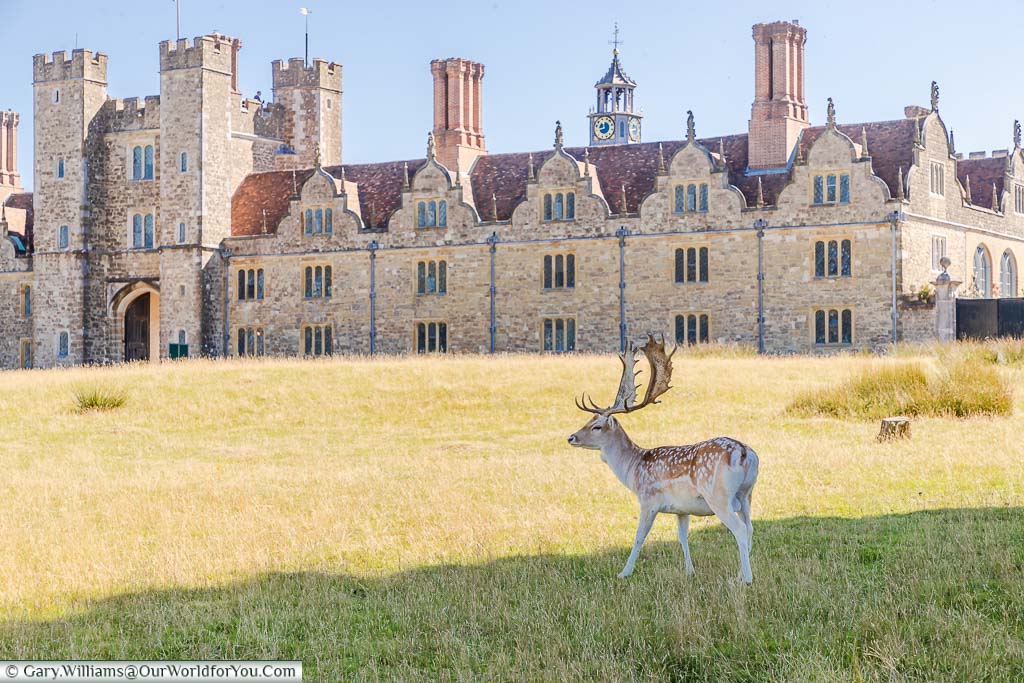
There’s no doubt you’ll spot a deer or ten; they have become entirely used to sharing their reserve with the public. Although the advice given is not to approach the deer and move away if they come near you. Unfortunately, some visitors feed the wild deer, which have made them become very inquisitive.
It is important that you do not feed the herd as even fruit and vegetables are not their natural diet.
If you visit during April and May, you’ll notice that the deer will be shedding their winter coats and the lighter weight summer coats starting to grow through. You may also spot the bucks begin to cast their antlers ready for the new growth during these months.
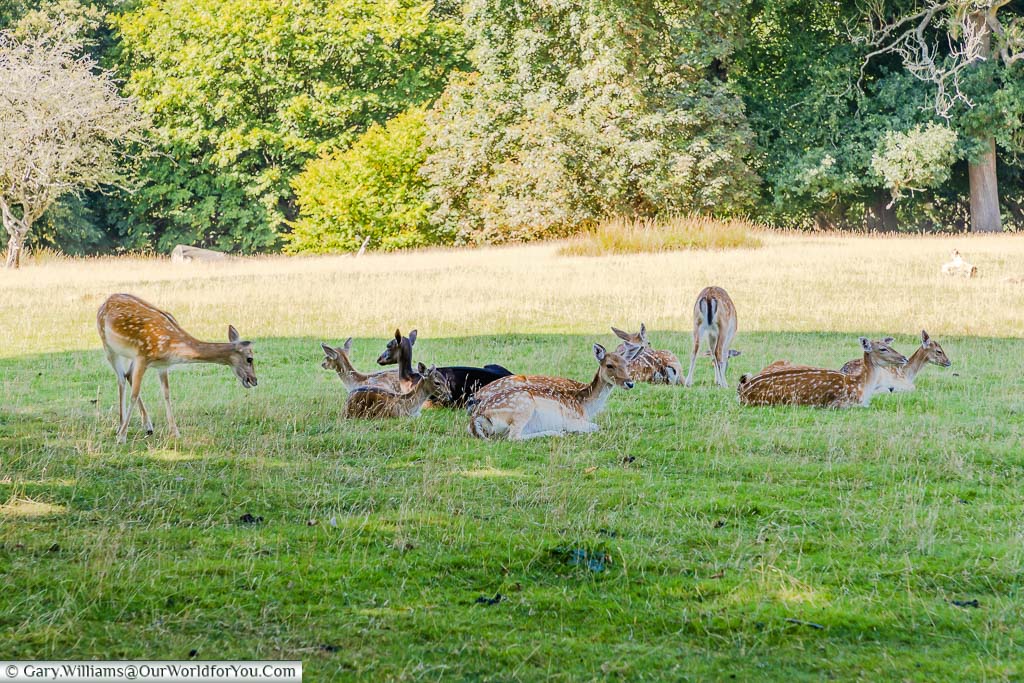
Discovering more of Kent
* This post may contain links to affiliated sites where we earn a small commission at no additional charge to you.
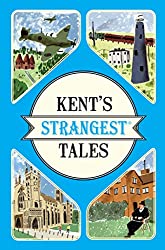

What a terrific read, Janis! I’d not heard of Knole Park before but it’s now added to the To Visit List! I thoroughly enjoyed your article as I kept thinking to myself “oh that’s so interesting” after reading about the many varied rooms inside Knole House, massive fan of those fitted bookshelves in the bedroom and the Orangery too! We shall be keeping a sharp eye open for the deer, they always bring a smile to our faces
Thanks, Russell, I didn’t realise how large the house was, so I was blown away when we drove up to it. It’s hard to believe how secluded these places can be.
There’s so much to see in the house, and the National Trust volunteers are fantastic; they love chatting about the Knole.
The deer herds are incredible; they are obviously very used to people wandering around and don’t appear to care. However, I was still a bit cautious of the ones with antlers.
I hope you do get to visit; you’d love it.